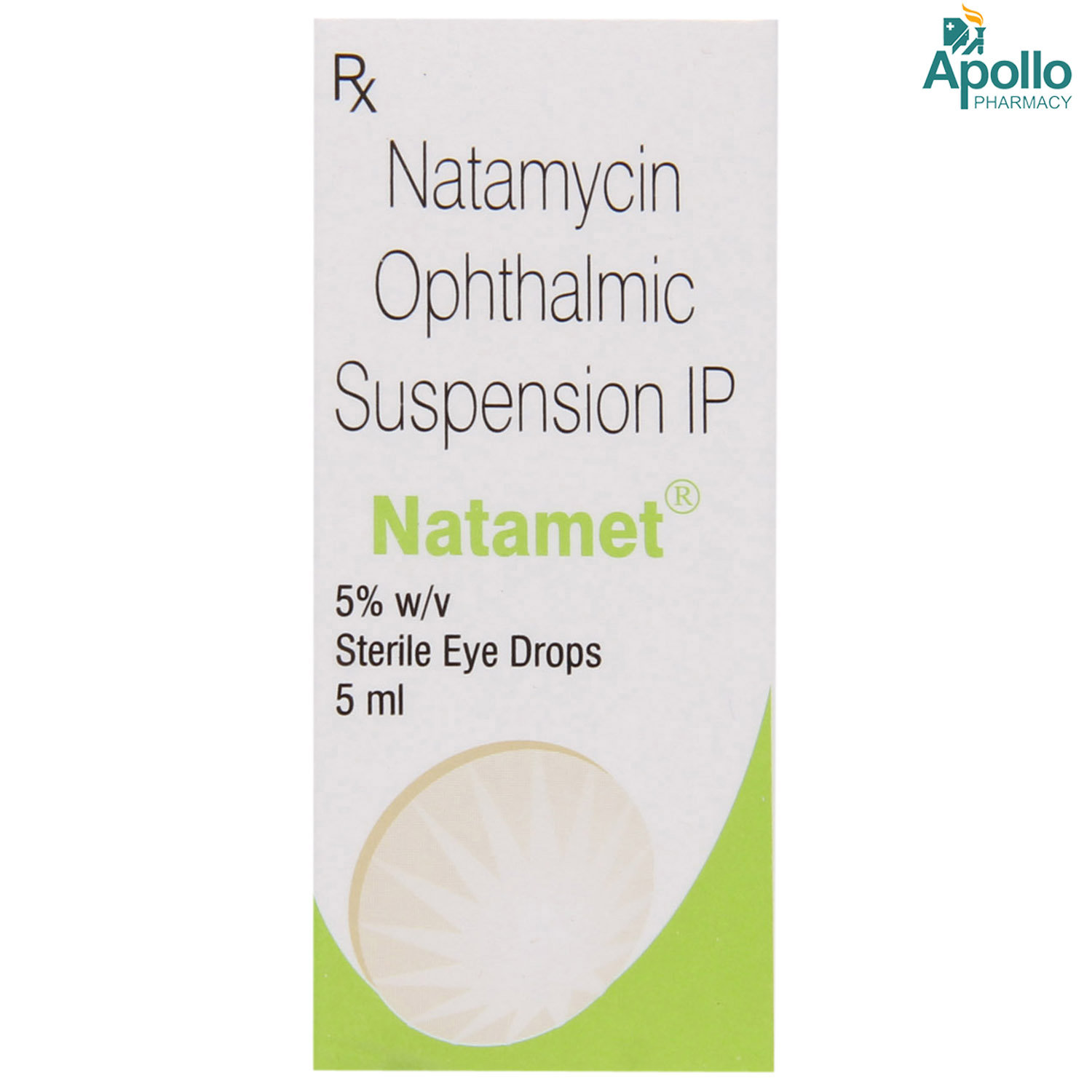Myconat Eye Drops 5 ml


MRP ₹111
(Inclusive of all Taxes)
₹16.6 Cashback (15%)
Provide Delivery Location
Online payment accepted
 Prescription drug
Prescription drugWhats That
Composition :
Manufacturer/Marketer :
Consume Type :
Return Policy :
Expires on or after :
NPPA :
About Myconat Eye Drops 5 ml
Myconat Eye Drops 5 ml belongs to a class of medication called 'antifungal' used to treat fungal infections of the eye. A fungal infection is a disease in which a fungus attacks the tissue and causes damage to the eye. Fungi are commonly present in nature but do not cause infections normally. However, if the fungi enter the eye, then it causes eye pain, redness, and blurred vision.
Myconat Eye Drops 5 ml contains 'Natamycin', which works by killing fungi by destroying their outer cell membrane. The fungal cell membranes are essential for their survival as they prevent the entry of unwanted substances into the cells and stop the leakage of cell contents.
Use Myconat Eye Drops 5 ml as suggested by the doctor. You are advised to use Myconat Eye Drops 5 ml for as long as your doctor has prescribed it for you based on your medical condition. In some cases, you may experience eye irritation, allergic reaction, vision change and eye pain. Most of these side effects of Myconat Eye Drops 5 ml do not require medical attention and gradually resolve over time. However, if the side effects persist or worsen, please consult your doctor.
Before using Myconat Eye Drops 5 ml, tell your doctor if you have any allergy to any of its components. Myconat Eye Drops 5 ml should only be used in pregnancy or breastfeeding females if specified by the doctor. Myconat Eye Drops 5 ml is not recommended for children as safety and effectiveness were not established. Avoid driving after taking Myconat Eye Drops 5 ml as it may affect your ability to drive. Myconat Eye Drops 5 ml is safe to use in elderly people as no difference in safety and effectiveness has been observed.
Uses of Myconat Eye Drops 5 ml
Directions for Use
Medicinal Benefits
Myconat Eye Drops 5 ml is recommended for the treatment of fungal infections of the eye such as conjunctivitis (infection of the white part of the eye), endophthalmitis (infection of the inside part of the eye) and keratitis (infection of the clear part of the eye) caused by fungi in the eyes. It acts by stopping the growth of fungus in the eye that provides relief in irritation, redness, itching, swelling of the eye associated with a fungal eye infection.
Storage
Drug Warnings
It is advised not to touch the tip of the dropper as it may contaminate the Myconat Eye Drops 5 ml. Patients are advised not to wear contact lenses while using this medicine. If you are using any other medicine, then wait for at least 5 minutes after applying Myconat Eye Drops 5 ml. After using Myconat Eye Drops 5 ml, wait for some time so that your vision clears up. Do not drive or operate any machine just after applying Myconat Eye Drops 5 ml as this medicine may make eyes blurred for some time. This drug only works for a fungal eye infection and does not work for other types of infections. Using Myconat Eye Drops 5 ml unnecessarily or misusing it may decrease the effectiveness of the drug. It is advised to use this medicine full time, as sudden stopping the medicine may allow the fungus to continue to grow which may allow the fungus to grow.
Drug-Drug Interactions
Drug-Drug Interactions
Login/Sign Up
Drug-Food Interactions
Drug-Food Interactions
Login/Sign Up
Diet & Lifestyle Advise
- Wash your hands regularly and keep your hands clean to prevent the spread of germs.
- Avoid dusty activities and digging in the soil.
- Wear shoes, a long-sleeved t-shirt, and long pants while doing outdoor activities such as yard work, gardening, or vising wooded areas to protect from fungus commonly present in the environment.
- Maintain a diet that is low in sugar, refined carbohydrates, mold-containing foods, and yeast.
Side Effects of Myconat Eye Drops 5 ml
- Mild eye discomfort
- Change in vision
- Allergic reaction
- Chest pain
- Eye swelling
- Eye pain
Habit Forming
Therapeutic Class
All Substitutes & Brand Comparisons
RX
Out of StockNetlavision 5% Eye Drop
₹80
(₹14.4/ 1ml)
27% CHEAPERRX
Out of StockNatadrops 5% Eye Drop 5 ml
Cipla Ltd
₹89
(₹16.02/ 1ml)
19% CHEAPERRX
Out of StockNtc Eye Drop
Vee Remedies
₹102.8
(₹18.5/ 1ml)
7% CHEAPER
Product Substitutes
Drug-Diseases Interactions
Drug-Diseases Interactions
Login/Sign Up
FAQs
Tell your doctor if you are using other medicines including ointments or drops. Wait for a minimum of 5 minutes after applying Myconat Eye Drops 5 ml and then only use other medicines.
The most common cause for fungal eye infection is an eye injury especially if a plant material like a stick or thorn caused an injury. Most fungi that cause eye infections live in the environment often associated with plant material.
While using antifungal medicine, it is suggested to avoid high sugary foods like bananas, dates, certain meats, and refined fats.
Myconat Eye Drops 5 ml works only for fungal eye infections, using it unnecessarily may lead to reduced effectiveness of the medicine.
Some of the common symptoms of fungal eye infection are eye redness, blurred vision, eye pain, eye discharge.
Myconat Eye Drops 5 ml is mostly used for the treatment of eye infections. It is not recommended for the treatment of ear infections. However, it should be used for any indication only when prescribed by a doctor.
Myconat Eye Drops 5 ml may improve within 2 to 3 days of administration. However, recovery depends on different factors such as age, the severity of the infection, and comorbidities.
Myconat Eye Drops 5 ml contains "Natamycin", which works by killing fungi by destroying its outer cell membrane. The fungal cell membranes are essential for their survival as they prevent the entry of unwanted substances into the cells and stops the leakage of cell contents.
Before using Myconat Eye Drops 5 ml, you must inform your doctor if you have any allergy to Myconat Eye Drops 5 ml or any antibiotics or if you are taking any other medicines.
Drug-Drug Interactions Checker List
- PREDNISOLONE
- DEXAMETHASONE
Special Advise
To diagnose the fungal infection in the eye, the doctor may examine the eye by taking a small sample of tissue or fluid from the eye.
Disease/Condition Glossary
Eye infections caused by fungi is known as fungal eye infection. These infections are rare, but they can be severe.
Conjunctivitis: It is also known as 'pink eye', and is an infection that affects the outer membrane of the eyeball. This is a contagious disease that can spread from one person to another through hand-to-eye contact or touching objects that are already touched by persons who have infected eyes. Symptoms include pink eyes, watery discharge, and itchiness of the eyes.
Keratitis: It is a common eye infection that affects the cornea (clear part) of an eye. People who use contact lenses are at high risk of developing this condition in comparison to others who don't wear lenses. symptoms include redness, eye discharge, pain, and irritation of the eye.
Endophthalmitis: This infection affects the inside part of the eyes. Common symptoms include redness of eyes, white or yellow discharge from eyes, reduced vision, and swelling of eyes.

Have a query?
Buy best Ocular products by
Entod Pharmaceuticals Ltd
Ajanta Pharma Ltd
Sunways (India) Pvt Ltd
Sun Pharmaceutical Industries Ltd
Cipla Ltd
Micro Labs Ltd
Allergan Healthcare India Pvt Ltd
Intas Pharmaceuticals Ltd
Raymed Pharmaceuticals Ltd
Nri Vision Care India Ltd
FDC Ltd
Jawa Pharmaceuticals India Pvt Ltd
Indoco Remedies Ltd
Sapient Laboratories Pvt Ltd
Senses Pharmaceuticals Pvt Ltd
Centaur Pharmaceuticals Pvt Ltd
Neomedix Healthcare India Pvt Ltd
Aromed Pharmaceuticals
Optho Remedies Pvt Ltd
Aurolab
Austrak Pvt Ltd
Lupin Ltd
Mankind Pharma Pvt Ltd
Zivira Labs Pvt Ltd
Optho Pharma Pvt Ltd
Synovia Life Sciences Pvt Ltd
Akumentis Healthcare Ltd
Eyekare
His Eyeness Ophthalmics Pvt Ltd
Protech Remedies Pvt Ltd
Runyon Pharmaceutical Pvt Ltd
Alcon Laboratories Inc
Syntho Pharmaceuticals Pvt Ltd
Alembic Pharmaceuticals Ltd
Bell Pharma Pvt Ltd
Klar Sehen Pvt Ltd
Sentiss Pharma Pvt Ltd
Irx Pharmaceuticals Pvt Ltd
Optho Life Sciences Pvt Ltd
Phoenix Remedies Pvt Ltd
Alkem Laboratories Ltd
Doctor Wonder Pvt Ltd
Hicare Pharma
Ipca Laboratories Ltd
Neon Laboratories Ltd
Okulus Drugs India
Pharmtak Ophthalmics (I) Pvt Ltd
Berry & Herbs Pharma Pvt Ltd
Glow Vision Pharmaceuticals
Kaizen Drugs Pvt Ltd
Choroid Laboratories Pvt Ltd
Indiana Opthalamics Pvt Ltd
Optica Pharmaceutical Pvt Ltd
Pharmatak Opthalmics India Pvt Ltd
Samarth Life Sciences Pvt Ltd
Vibgyor Vision Care
Mofon Drugs
Novartis India Ltd
Pharmia Biogenesis Pvt Ltd
Zydus Cadila
Appasamy Ocular Devices Pvt Ltd
Leeford Healthcare Ltd
Medivision Pharma Pvt Ltd
Orbit Life Science Pvt Ltd
X-Med Royal Pharma Pvt Ltd
Zee Laboratories Ltd
Aarma Laboratories
Guerison MS Inc
Laborate Pharmaceuticals India Ltd
Xtas Pharmaceuticals
Accurex Biomedical Pvt Ltd
Blucrab Pharma Pvt Ltd
Does Health Systems Pvt Ltd
Flagship Biotech International Pvt Ltd
Lavue Pharmaceuticals Pvt Ltd
Nutrilis Healthcare Pvt Ltd
Ursa Pharm India Pvt Ltd
Vee Remedies
Vyonics Health Care India Pvt Ltd
Warren Pharmaceuticals Pvt Ltd
Abbott India Ltd
Accvus Pharmaceuticals
Akums Drugs & Pharmaceuticals Ltd
Cadila Healthcare Ltd
Carevision Pharmaceuticals Pvt Ltd
Dey's Medical Stores (Mfg) Ltd
East West Pharma India Pvt Ltd
Eyedea Pharmaceuticals Pvt Ltd
Nimbus Healthcare Pvt Ltd
Ocuris Pharmaceuticals Pvt Ltd
Sherings Pharmaceuticals
Tarks Pharmaceuticals Pvt Ltd
Vcan Biotech
Vision Medilink
Aice Health Care Pvt Ltd
Appasamy Pharmaceuticals Pvt Ltd
Asperia Lifescience Pvt Ltd
Beatum Healthcare Pvt Ltd
East India Pharmaceutical Works Ltd
Grevis Pharmaceutical Pvt Ltd
Alcohol
Safe if prescribed
Interaction of Myconat Eye Drops 5 ml with alcohol is unknown. Please consult a doctor before consuming alcohol while using Myconat Eye Drops 5 ml.
Pregnancy
Caution
Myconat Eye Drops 5 ml is a pregnancy category C drug so it may harm the fetus. Myconat Eye Drops 5 ml should only be used in pregnant females if clearly specified by the doctor.
Breast Feeding
Caution
It is not known if Myconat Eye Drops 5 ml can pass in breast milk or not so it should only be used in pregnant females if clearly specified by the doctor.
Driving
Unsafe
Avoid driving after taking Myconat Eye Drops 5 ml as it may cause blurred vision for some time that may affect your ability to drive or operate machinery.
Liver
Safe if prescribed
Myconat Eye Drops 5 ml is safe to use in patients with the liver disease only when prescribed by a doctor.
Kidney
Caution
Myconat Eye Drops 5 ml should be used with caution in renal problems. Dose adjustments may be necessary.
Children
Caution
Myconat Eye Drops 5 ml is not recommended for children as the safety and effectiveness were not established.





